While this blog focuses mostly on travel and photography, I dabble now and then in my other passions, specifically listening to music. One of the most popular posts on this site is the Dirac Live Review, which sits at #2 behind the Leica Summilux 35MM Pre-Aspherical review. I had been closely watching the development of this speaker by Ascilab, a Korean upstart company. Their transparency on how they develop their speakers on Audio Science Review was refreshing.
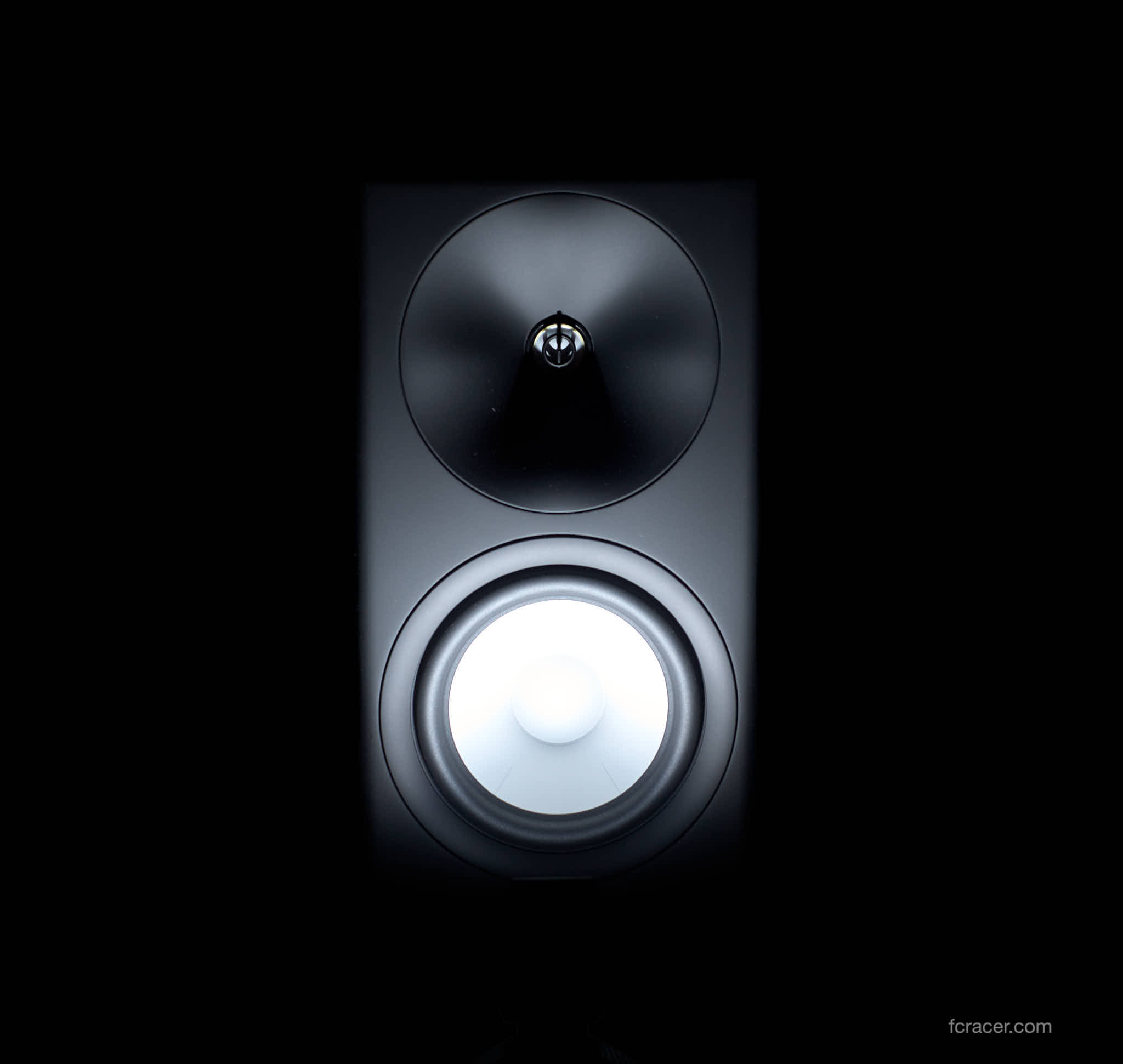
When they finally launched the finished product, the measurements started to come in and they looked exactly how the engineers intended, in that they measured excellent, with a flat frequency response and smooth directivity. In my Hong Kong apartment, I had a set of Revel R35 Concerta speakers which also measured very well. However, they are huge physically, and also in how they excite room modes in the lower frequencies. I was therefore ripe for a change and wanted to give Ascilab a chance.
Disclaimer: This review is 100% my own view and is in no way influenced by Ascilab.com. I purchased the speakers directly from Ascilab.com for my own use at the full retail price without them knowing I would be conducting a review.
Delivery and Packaging
Delivery was a bit slower than I expected at ~5 weeks, but given this was a new company, I forgave the delivery timeframe and the lack of information sharing on delivery status. I was probably in the second batch of sales (after ASR’s and Erin’s reviews went out) so I assume Ascilab must have been swamped with a deluge of orders.
The box came delivered to my apartment in Hong Kong in immaculate condition with no marks, dents, or anything to indicate it came all the way from Seoul (I assume they are made in Seoul in South Korea). The speakers were double boxed so given the outside was in a perfect condition, the inside box was also perfect.
I was a bit confused on how to unpackage them but decided to break the seal on the inside box to see how things worked. That was a good call as they are designed to be removed from the top by grabbing the cloth covering each speaker and pulling them up. I appreciated Ascilab for the mini bicep workout while extracting the speakers.
Fit and Finish
Once out of the box, the first thing that struck me was the fit and finish. These look like speakers from a company that has been around for decades rather than a new upstart. Everything looked perfect with no blemishes or bad joints. The speakers were larger and heavier than I expected based on the pictures online, but I assume this was necessary for the immense bass they produce as we’ll see later.
The only potential issue I saw was the rubber isolation material used at the bottom of the speaker. The level of friction gives the impression that they will hold the speaker in place very well, however the softness of the material made me question if they will hold up to someone accidentally rotating the speaker without lifting it up. When I was positioning the speaker, I could feel the material flexing and immediately lifted the speaker up so that it would not potentially tear or damage the isolation material.
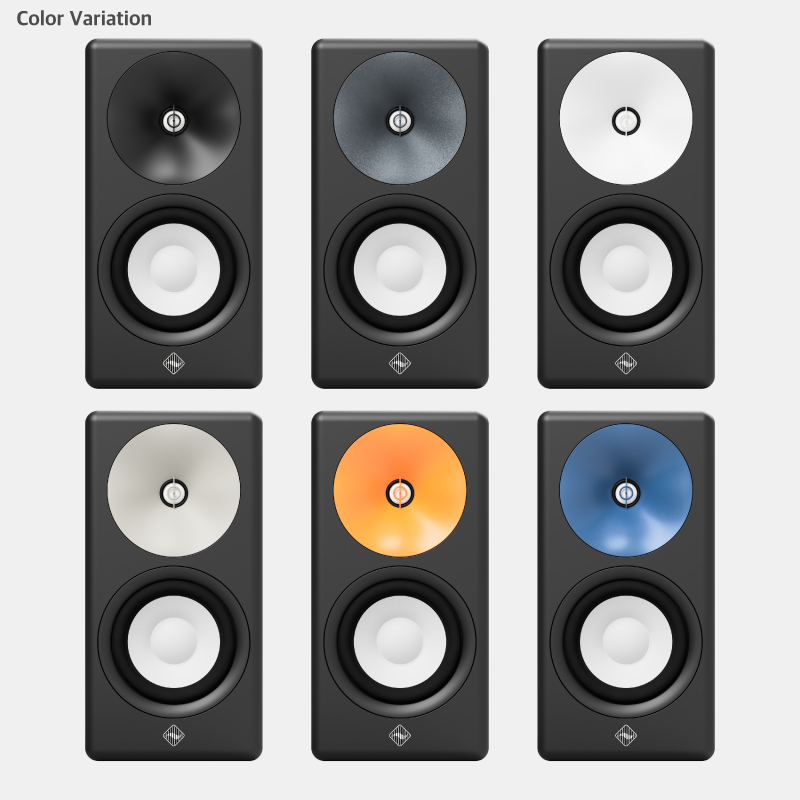
The woofer cone finishing ring was taped in place and needed to be removed prior to use. It was easy to take off and was of no concern, however one of the rings surrounding the speaker came off when I was taking the tape off. Putting it back on was very easy as it uses a magnetic attachment; all that was required was finding the corresponding magnets’ correct position and it snapped back into place.
One thing that wasn’t noticeable in the pictures online was how intricate the tweeter waveguide is. It is not a simple conical shape; it has a variable and complex shape. I tried to use the flash in the main review image to give you a sense of the complex shape. I appreciate this very cool detail of the engineering prowess of Ascilab!
I chose the matte black finish and having seen and touched the speaker in real life, if I could go back, I would have chosen the gloss white or gloss black. I think the matte finish is going to pick up lots of dust and is somewhat difficult to clean. It reminds me of Apple’s dark matte finish on the latest Macbooks. It took some effort with a wet cloth to remove my fingerprints from positioning the speaker.
Sound Quality
I would like to provide some context before sharing my thoughts. The current setup is a Cambridge Audio EVO150 integrated streaming amplifier which uses Hypex NCore amplifier modules. The current speakers are Revel F35 2.5-way towers which ASR reviewed here. They are incredible speakers that do everything very well and at a very reasonable price; I have recommended the F35 to many friends who have been very happy with them.
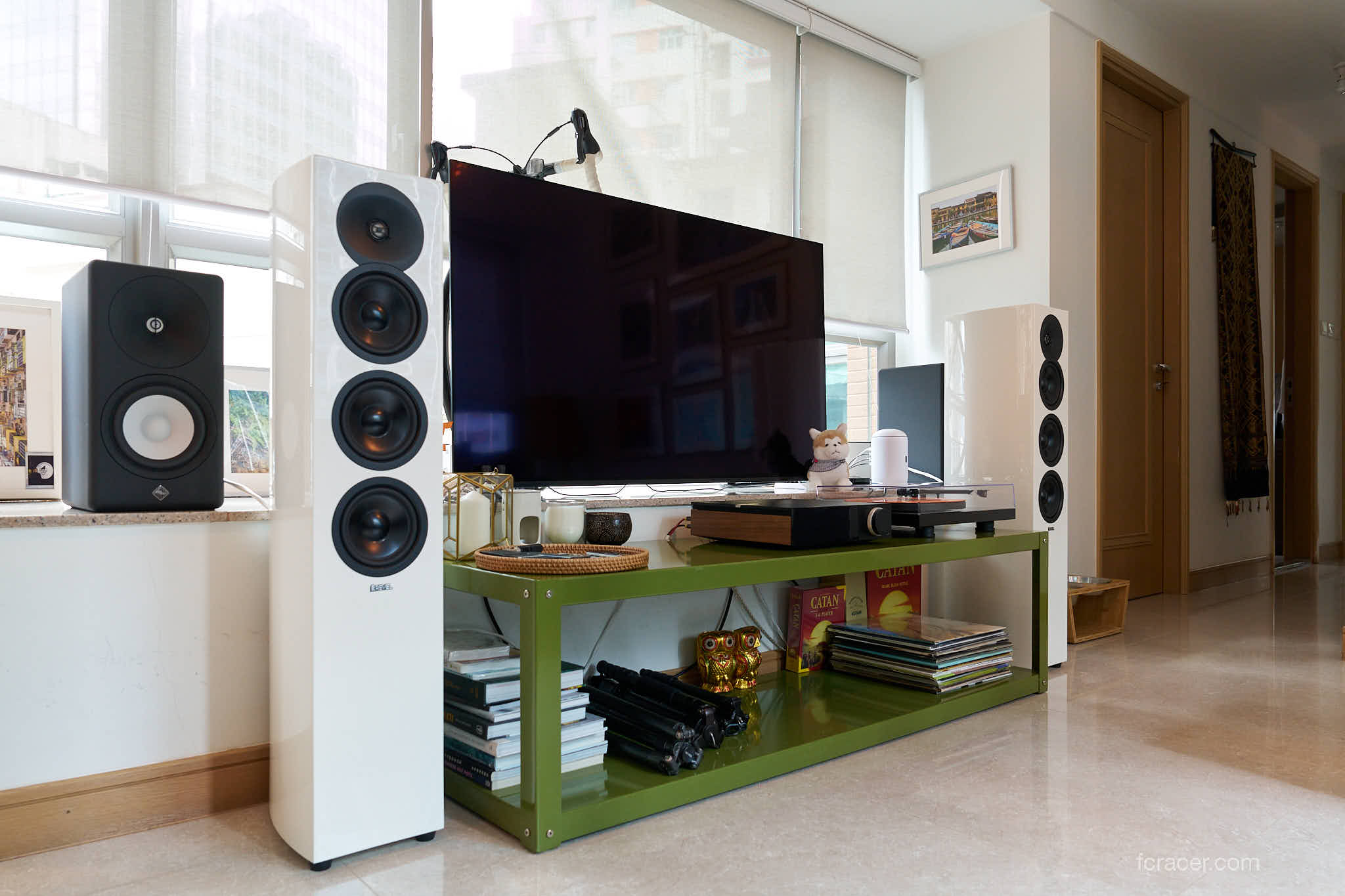
The goals I had in changing speakers were as follows:
- The F35 are way too big for the space I have in Hong Kong. They are visually big and excite room modes like it’s a Berlin nightclub.
- The F35 sound bright (exaggerated high frequencies) in this highly reflective room. Because of the intense humidity in Hong Kong, we have tiled floors and little in the way of sound absorbent materials.
- I loved what Ascilab had done in being so transparent with their development of these speakers so I wanted to give them my business and support. If the C6B had not come along, I would have purchased a second-hand set of KEF R3 Meta (I also admire KEF’s approach to R&D and transparency in providing white papers to their users).
Qualitative Sound Quality
Before doing any measurements with REW, I listened to the F35 and then swapped them out for the C6B. I tried my best to position them as close as possible in the same spot so that I give them a fair chance.
When swapping over to the C6B, three things became readily apparent:
- The speakers sounded much quieter than the F35. I didn’t want the REW measurements to bias my qualitative impressions, so I rewired an F35 and used an iPhone app to get the output to the same level, which required increasing the volume on the EVO150 by 5db for the C6B.
- The high frequencies sounded much less intense than the F35 which was a good sign that I may achieve one of my goals stated above.
- The bass was just as intense as the F35, which was something I didn’t expect given the smaller size. In fact, in some songs, I thought the C6B dug deeper, but I wrote in my notes that it was inconclusive and I would need A/B testing to be conclusive.
After more careful listening, I had the impression that the sound stage was very wide with a large sweet spot. I could move one seat over in the centre of the sofa either direction and still have a focused sound stage with clear definition of where the instruments and singers were placed. The F35 are also very good in this regard so I was happy that I didn’t lose any soundstage benefits going with this speaker.
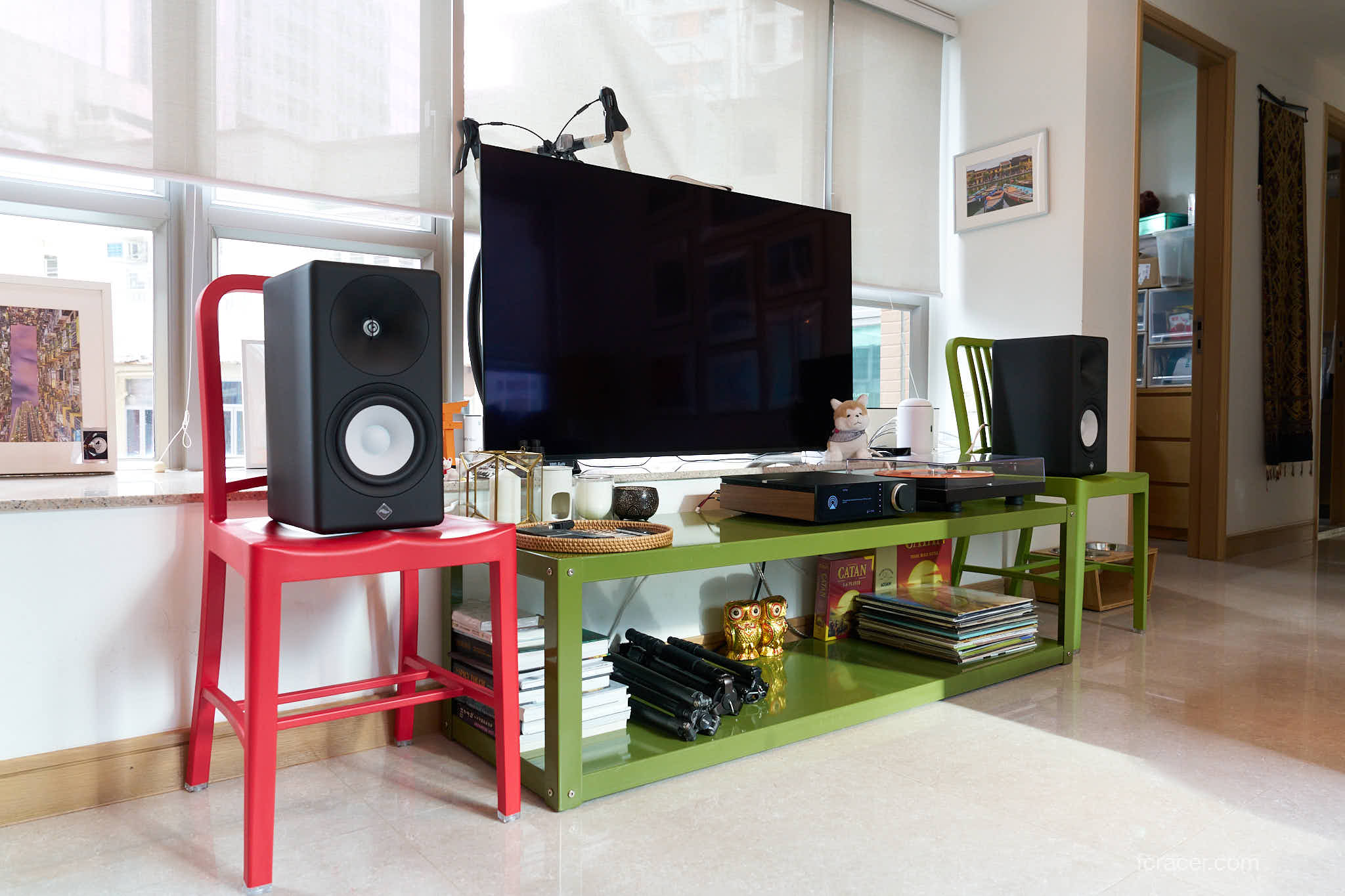
First impressions were very positive and I can imagine anyone setting these up would be very happy with their purchase. Even without taking any measurements, I could tell that they were going to trump the F35 in my room based on how good they sounded. Nothing stood out and that is exactly what we want with a neutral speaker; the only downside was the intensity of the bass but that is more my room rather than the speaker. My room would benefit with Room Correction software like Dirac Live or adjusting the EQ.
Quantitative Sound Quality
Avid readers of this website will know that I care mostly about how things measure, rather than how I feel they measure, so let us dig into what the measurements show us.
All measurements were conducted with the amazing and free REW software (thank you John!), UMIK-1 and Cambridge Audio EVO150 amplifier using AirPlay 2. All measurements were taken using the REW Moving Mic Method with Periodic Pink Noise and at least 60 samples with both speakers playing at the same time.
I conducted three measurements of each setup and ensured they were consistent (they were). I also conducted one measurement of the noise floor to ensure the tested measurements were well above the noise floor. Hong Kong is a very noisy place so it is impossible to get a perfectly quiet environment, so I’ve included the noise floor measurement for transparency.
Revel F35
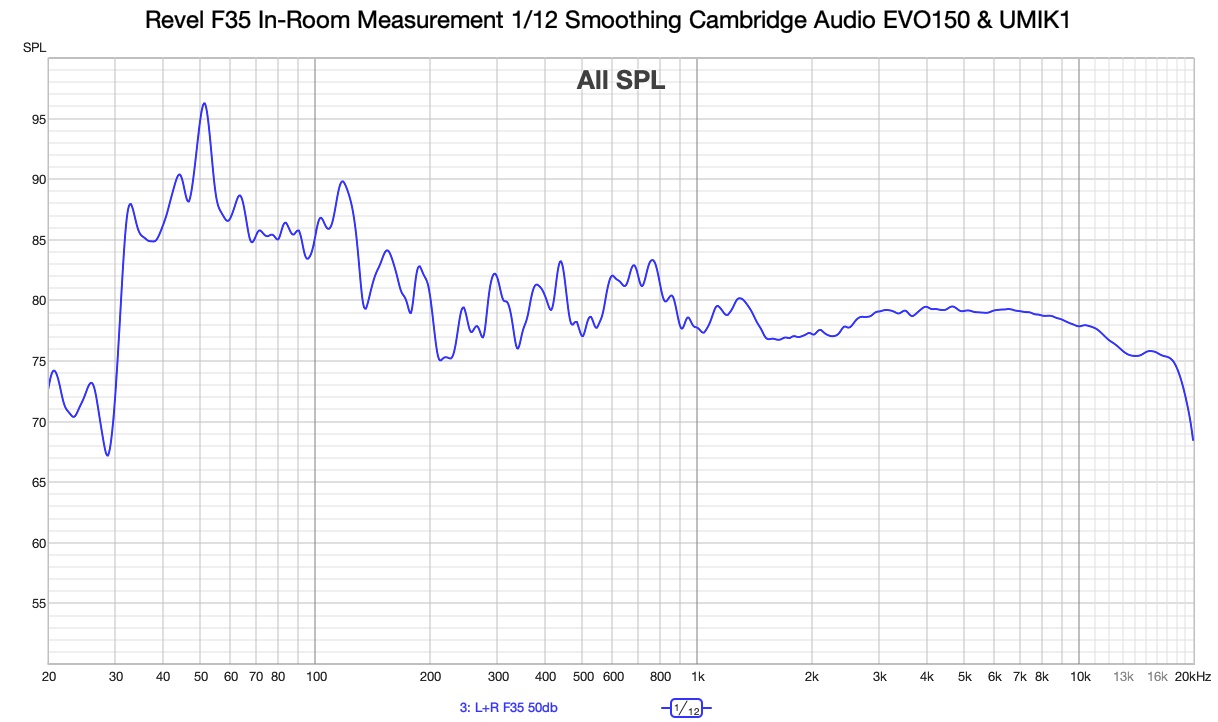
Ascilab C6B
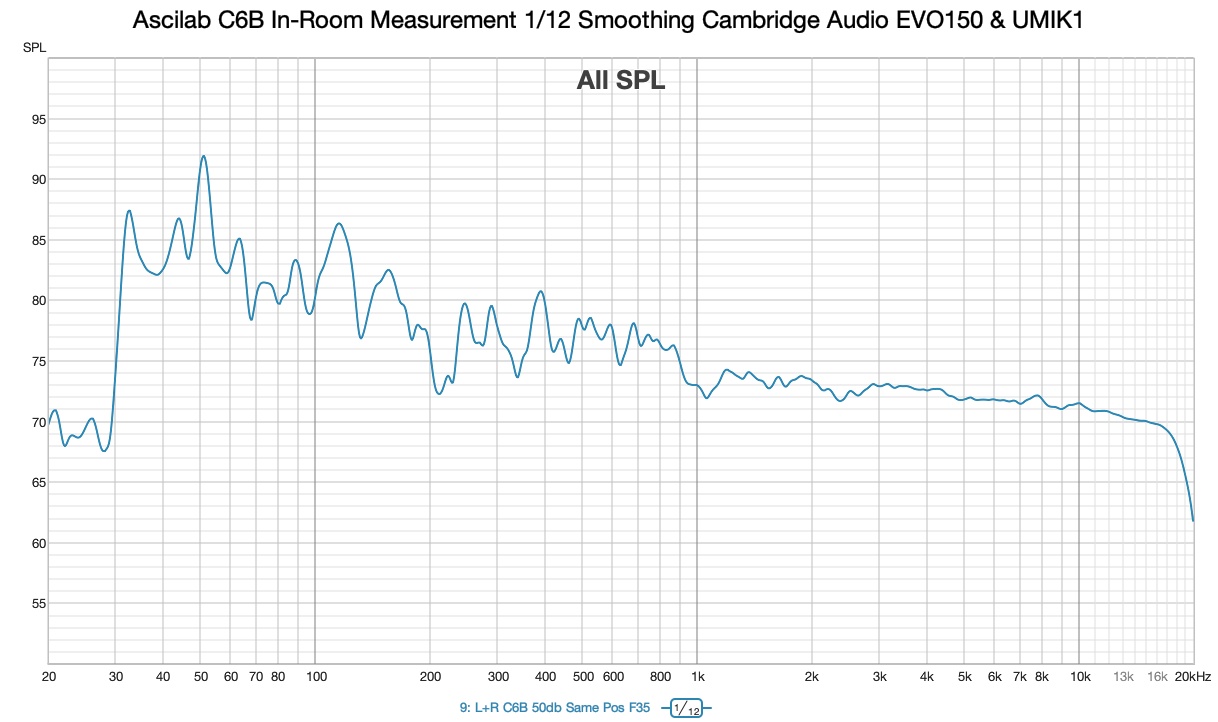
Noise Floor
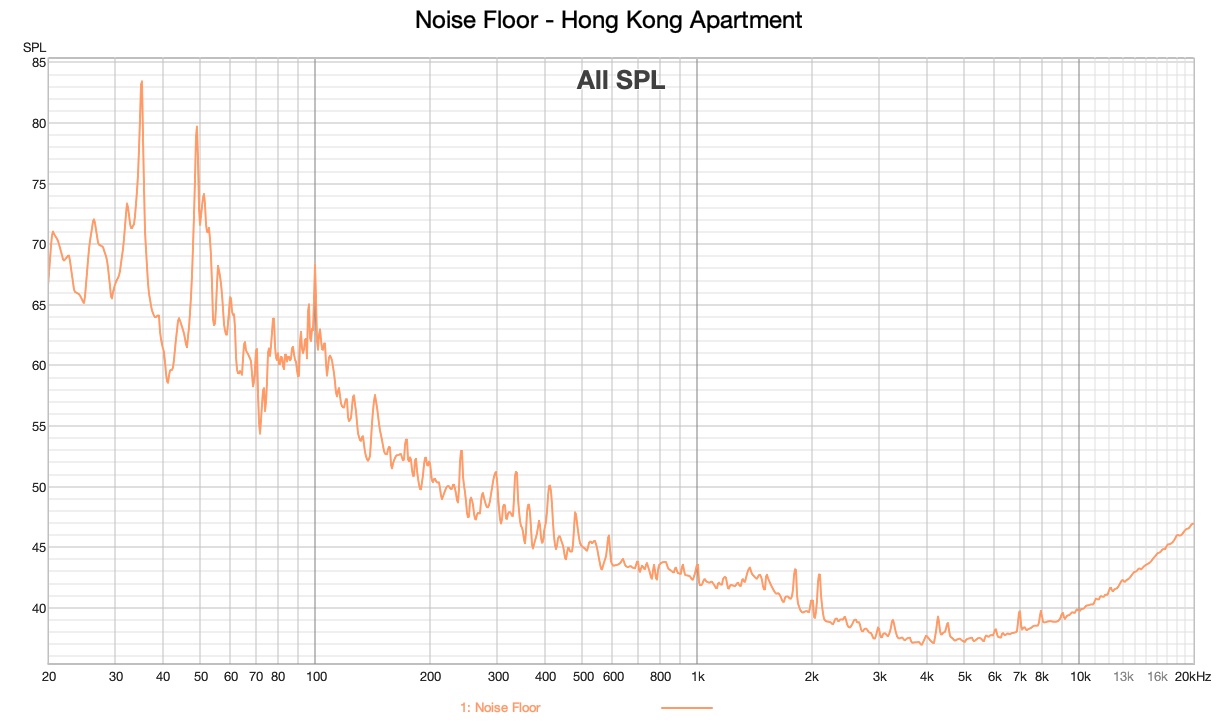
Revel F35 vs. Ascilab C6B vs. Apartment Noise Floor
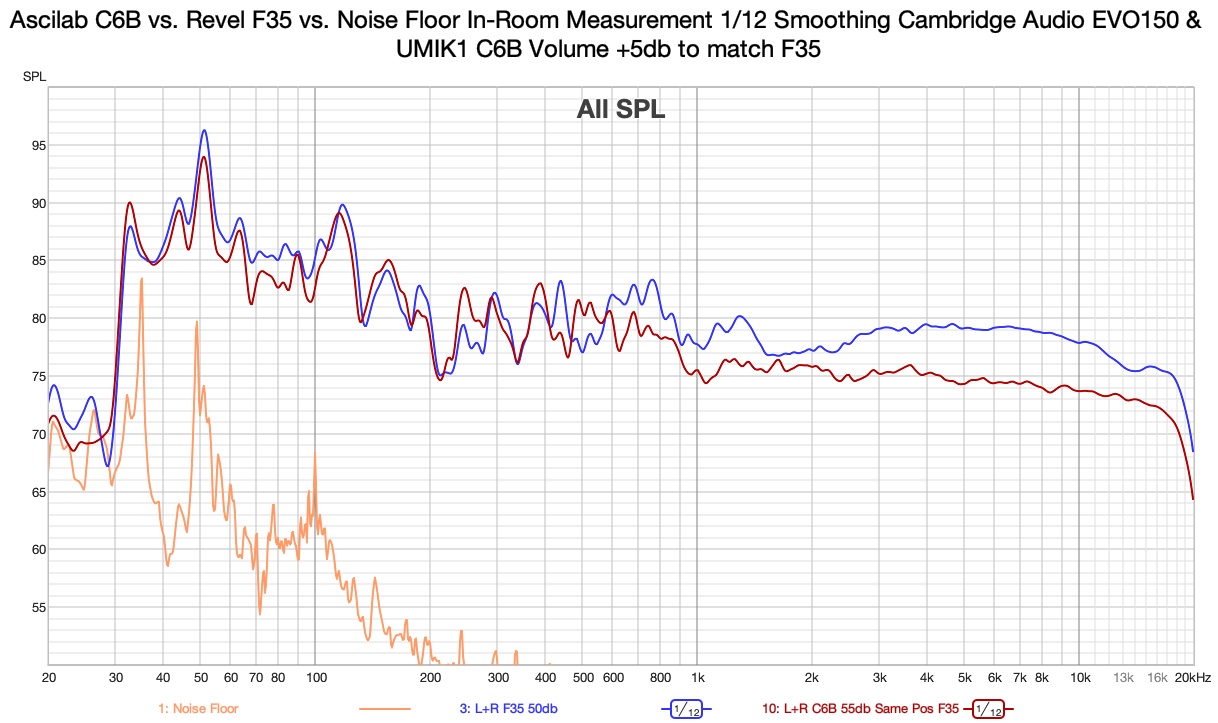
In-room and Estimated Measurements
One of the greatest technology advancements in speaker engineering was the invention of the Klippel Near Field Scanner (NFS). You can read about this incredible device in their white paper. What the Klippel NFS does is automate and standardize speaker testing in any environment. Rather than having to use a large outdoor environment or various gating techniques indoors, the Klippel NFS allows the tester to achieve consistent, repeatable and accurate measurements of the speakers capability.
To demonstrate how accurate the NFS is in predicting in-room behaviour, I have overlaid the estimated SPL vs. frequency to what I actually measured with my retail purchased speakers.
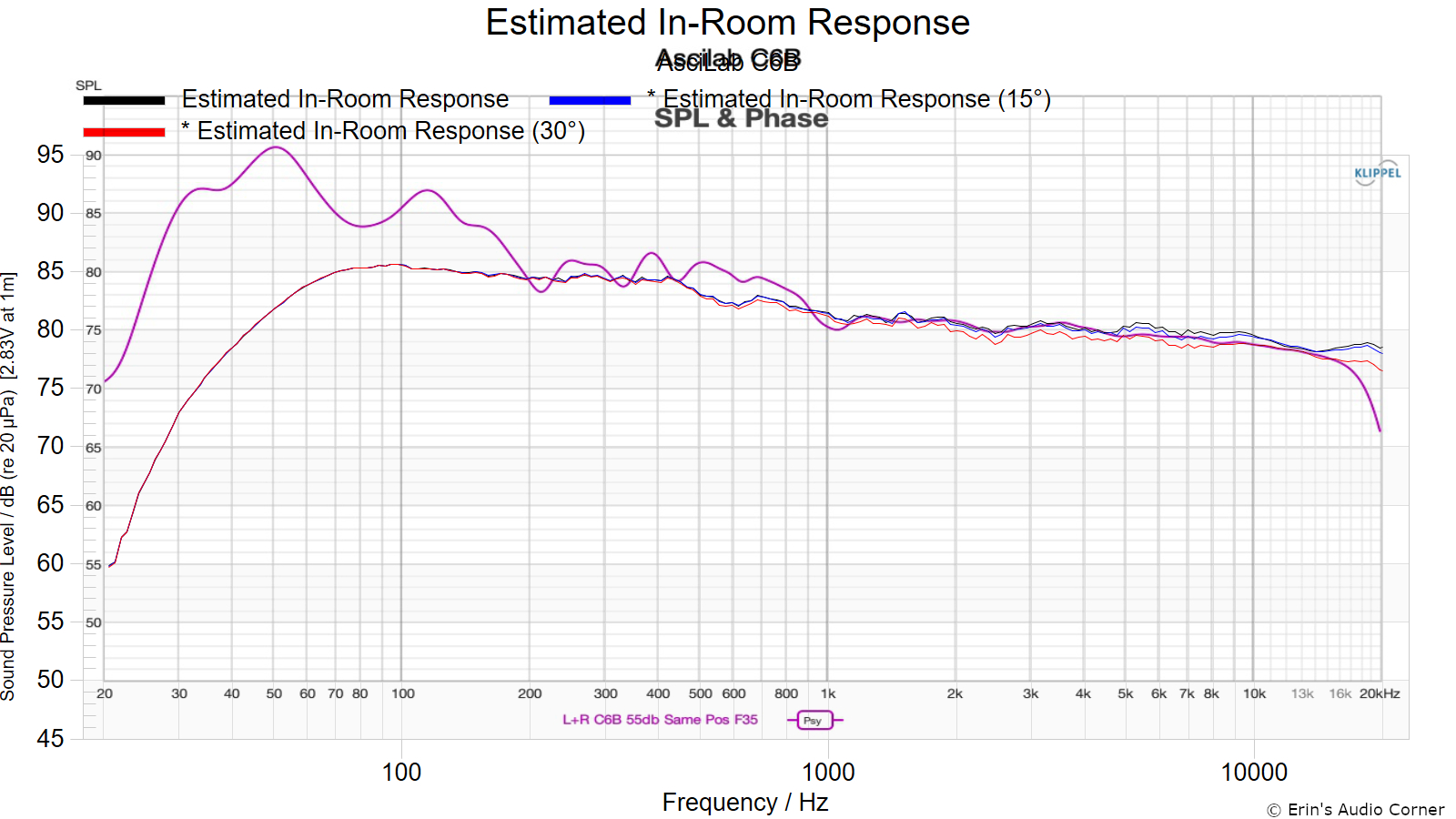
Looking at the graph, we can see that the frequency response above the Schroeder frequency correlates very closely with Klippel’s proprietary estimates. The reason why the lower frequencies don’t correlate is because those frequencies are dominated by the effects of the room. In my small Hong Kong apartment, with highly reflective surfaces, there are some frequencies where the waves bounce around the room and reinforce each other, and other waves where they bounce and cancel each other.
The only ways to fix those lower frequency issues are to: 1. Move the speakers, 2. Use room correction software, 3. Reduce the effects using an equalizer, or 4. Install large bass traps. For this setup, I chose the third option by using the built in EQ in the EVO150 to tame some of the room modes at 50Hz and 120Hz.
As an important aside, the estimated in-room response is the measurement I find the second most compelling after the on-axis frequency response. The on-axis provides you a view of how well the speaker is engineered when listened to in an environment with no reverberation. The in-room takes everything into consideration and provides a view of how it will actually sound in your room.
Based on Dr. Floyd Toole’s groundbreaking research at the National Research Council of Canada, he and Sean Olive found that listeners preferred speakers that produced a ~6db in excess energy in the low frequencies, flat to a mild slope down in the middle frequencies and then a more aggressive slope downwards in the highest frequencies. This can be seen in the solid black line in the graph.
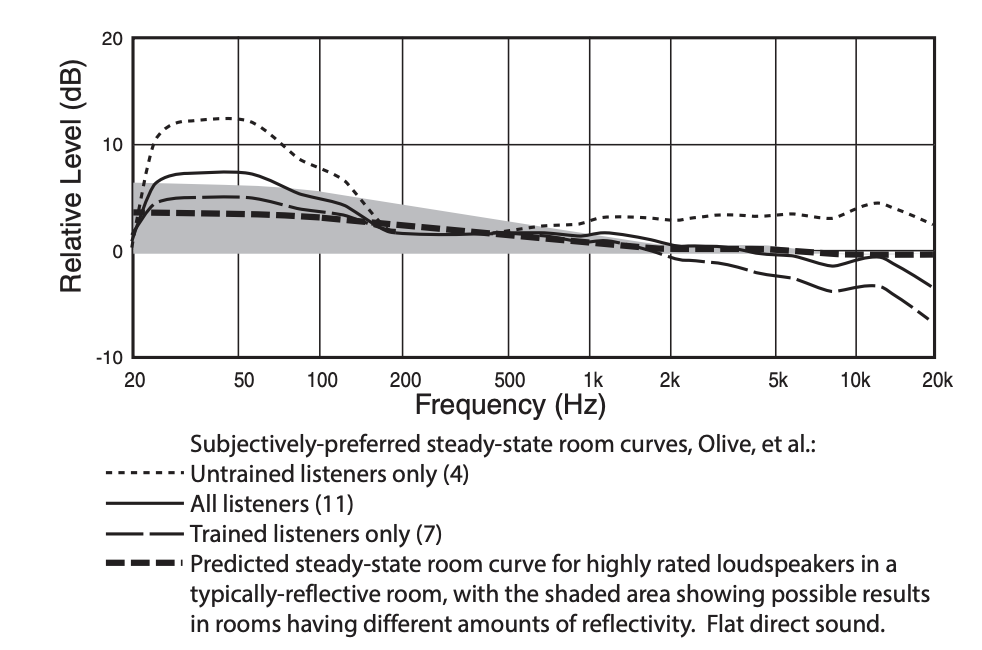
This preferred response happens to result from speakers that have a flat response in the anechoic on-axis measurements and smooth directivity (sound disperses evenly as you go outside of the sweet spot). While this may seem intuitive and obvious now, it was not prior to Dr. Floyd Toole’s and Sean Olive’s research. We now have definitive evidence of how a speaker should measure and what humans prefer.
If we look objectively at many high-end speakers, we will find they do not measure well at all. Their uneven frequency response and poor directivity introduce significant colouration to the music. I feel this is a disservice to the musicians and their sound engineers, who put great effort into making their music sound a certain way. It would be akin to taking a beautifully made movie and watching it with the colours dialled up and down in different spectrums to create a completely different visual than what the director intended.
Conclusion
As expected from the measurements we have seen online, the Ascilab C6B delivers on its promises. The speakers have excellent in-room measurements and can keep pace with my much larger Revel F35. I didn’t go above 100db for too long, but I did not notice anything unusual in either speaker at what I consider to be high volumes for an apartment. The only downside I experienced was that these speakers are hungry for power and need solid amplification to get very loud; they are afterall rated at 85db at 1m when fed 1W of power. I would suggest pairing them with a solid 200W/channel 4-ohm amplifier.
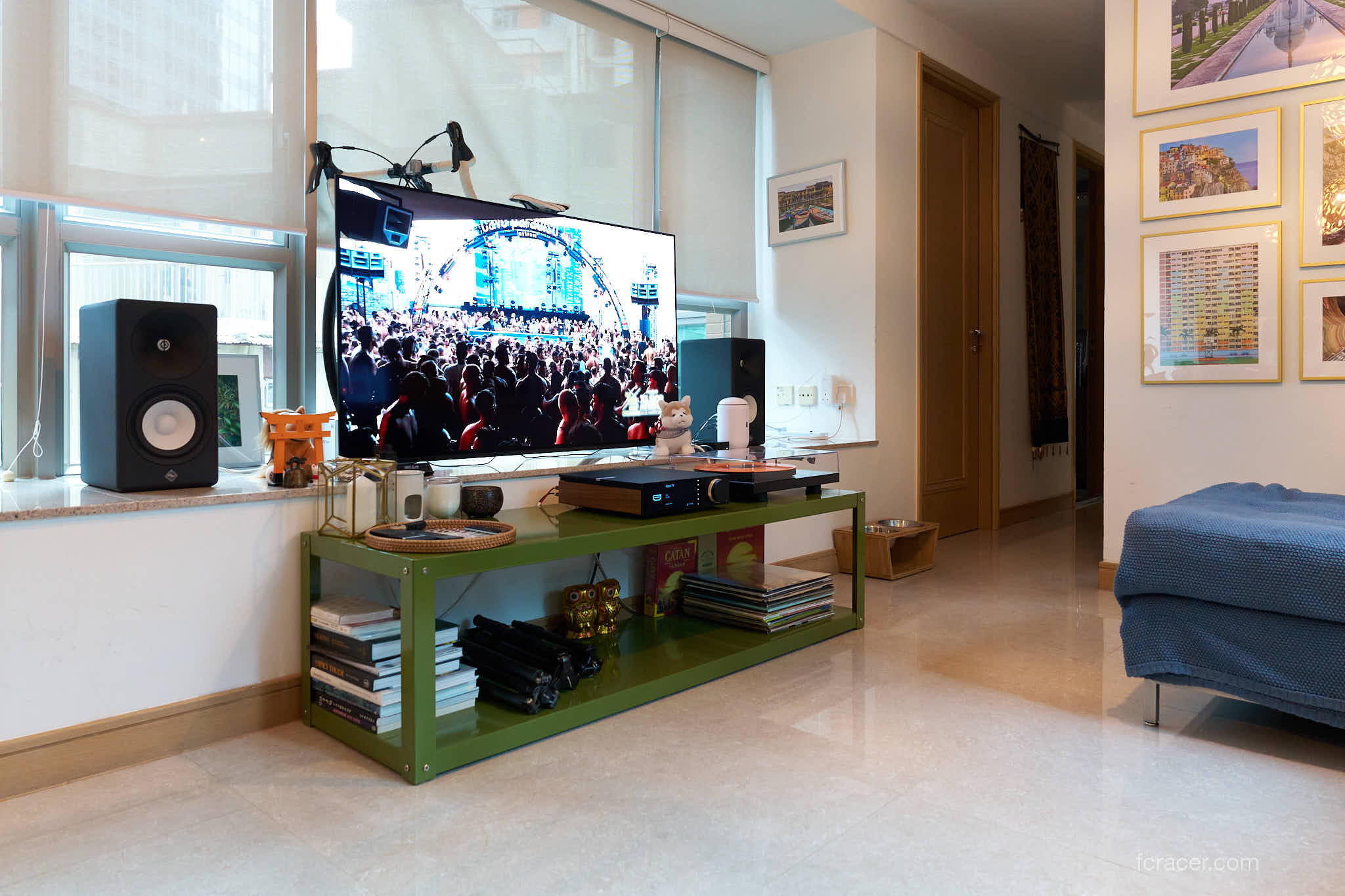
The Ascilab represents state-of-the-art performance in a very reasonably prices package. I believe Ascilab is leaving some money on the table with these speakers and I would not be surprised if we see price increases over time. They could increase prices 25% and still have a fantastic value-for-money offering. I am now wondering how much better the Purifi A6B model will be that they recently announced for sale. I would love to hear the Purifi woofer model, but I am not sure I can get over the appearance of the cone surround!
Ascilab is onto something special here; their science-first engineering model has set them on a path to great success and has provided us with exceptional speakers. I am looking forward to their future iterations and I am keen to consider purchasing the floor-stander they have on their roadmap. I hope the above provides some insight on this truly game-changing speaker; I’d be happy to answer any questions you may have.
Discover more from fcracer - Travel & Photography
Subscribe to get the latest posts sent to your email.
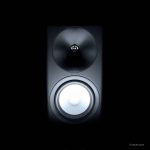
Hilariously, the *only* real issue seems to be the matte black finish picking up fingerprints – sounds exactly like my experience with the dark elegance of my current headphones. Kudos to Ascilab for engineering excellence and transparency; it’s clear theyre not just building boxes, but sonic instruments. The C6Bs performance, especially the bass from such a small speaker, is impressive even without A/B testing. If I were in the reviewers Hong Kong apartment, I might not even need room correction – just a good amplifier to handle their hunger! The only downside? The potential for future price hikes due to how good these are – a classic value trap if you will.
It seems like the C6B measured almost the same as the F35 in your room, with the modes and all as expected; with the bigger F35 showing off it’s sensitivity.
The modes are unfortunately the nature of the room, no amount of swapping speakers is gonna help you with that, so enters DSP, room correction and sub woofers.
Try introducing room correction like Dirac Live to your system, it can help smooth out some room modes, if that doesn’t suffice you will have to introduce a subwoofer, even a small one like the Kali 6.2 or SVS SB 1000 will do. The final evolution will of course be to have at least 2 subs with bass management software like Dirac bass control.
The main reason for more subs is not primarily for more output but to have smooth even response on the low end throughout the listening position.
Thank you for your note; I’m debating what approach to take. I like your suggestion of room correction; I’ve had great results with Dirac Live in my Beijing apartment. The current Cambridge Audio EVO150 I’m using in Hong Kong doesn’t feature this although they did recently update the firmware to include a very basic parametric EQ; can you believe they don’t tell us what the frequency bands are? I also like your suggestion for two subwoofers although Hong Kong apartments are very small so I’d need to go with something like the SVS3000 Micro which I have in the Beijing apartment.